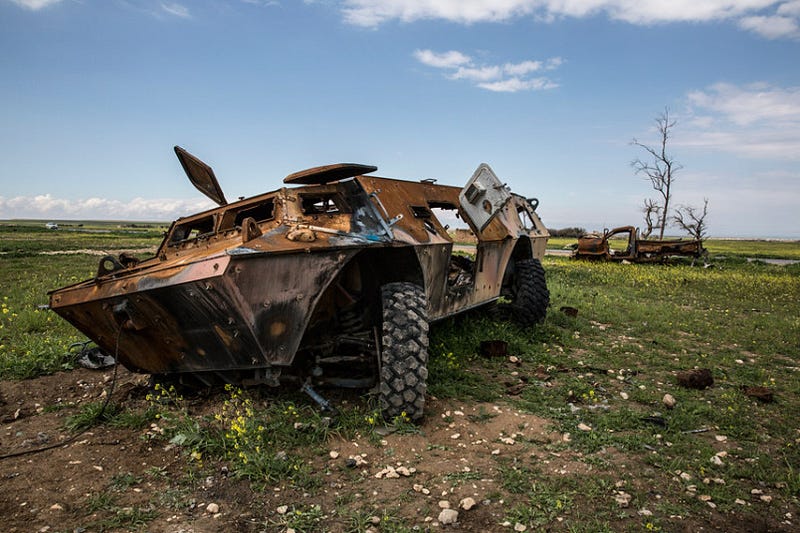Adrian Levy
Foreign Policy, December 16, 2015
CHALLAKERE, India — When laborers began excavating pastureland in India’s southern Karnataka state early in 2012, members of the nomadic Lambani tribe were startled. For centuries, the scarlet-robed herbalists and herders had freely crisscrossed the undulating meadows there, known as kavals, and this uprooting of their landscape came without warning or explanation. By autumn, Puttaranga Setty, a wiry groundnut farmer from the village of Kallalli, encountered a barbed-wire fence blocking off a well-used trail. His neighbor, a herder, discovered that the road from this city to a nearby village had been diverted elsewhere. They rang Doddaullarti Karianna, a weaver who sits on one of the village councils that funnel India’s sprawling democracy of 1.25 billion down to the grassroots.
Karianna asked officials with India’s state and central governments why the land inhabited by farming and tribal communities was being walled off, but they refused to answer. So Karianna sought legal help from the Environment Support Group, a combative ecological advocacy organization that specializes in fighting illegal encroachment on greenbelt land. But the group also made little progress. Officials warned its lawyers that the prime minister’s office was running the project. “There is no point fighting this, we were told,” Leo Saldanha, a founding member of the advocacy organization, recalled. “You cannot win.”
Only after construction on the site began that year did it finally become clear to the tribesmen and others that two secretive agencies were behind a project that experts say will be the subcontinent’s largest military-run complex of nuclear centrifuges, atomic-research laboratories, and weapons- and aircraft-testing facilities when it’s completed, probably sometime in 2017. Among the project’s aims: to expand the government’s nuclear research, to produce fuel for India’s nuclear reactors, and to help power the country’s fleet of new submarines.
But another, more controversial ambition, according to retired Indian government officials and independent experts in London and Washington, is to give India an extra stockpile of enriched uranium fuel that could be used in new hydrogen bombs, also known as thermonuclear weapons, substantially increasing the explosive force of those in its existing nuclear arsenal.
Foreign Policy, December 16, 2015
CHALLAKERE, India — When laborers began excavating pastureland in India’s southern Karnataka state early in 2012, members of the nomadic Lambani tribe were startled. For centuries, the scarlet-robed herbalists and herders had freely crisscrossed the undulating meadows there, known as kavals, and this uprooting of their landscape came without warning or explanation. By autumn, Puttaranga Setty, a wiry groundnut farmer from the village of Kallalli, encountered a barbed-wire fence blocking off a well-used trail. His neighbor, a herder, discovered that the road from this city to a nearby village had been diverted elsewhere. They rang Doddaullarti Karianna, a weaver who sits on one of the village councils that funnel India’s sprawling democracy of 1.25 billion down to the grassroots.
Karianna asked officials with India’s state and central governments why the land inhabited by farming and tribal communities was being walled off, but they refused to answer. So Karianna sought legal help from the Environment Support Group, a combative ecological advocacy organization that specializes in fighting illegal encroachment on greenbelt land. But the group also made little progress. Officials warned its lawyers that the prime minister’s office was running the project. “There is no point fighting this, we were told,” Leo Saldanha, a founding member of the advocacy organization, recalled. “You cannot win.”
Only after construction on the site began that year did it finally become clear to the tribesmen and others that two secretive agencies were behind a project that experts say will be the subcontinent’s largest military-run complex of nuclear centrifuges, atomic-research laboratories, and weapons- and aircraft-testing facilities when it’s completed, probably sometime in 2017. Among the project’s aims: to expand the government’s nuclear research, to produce fuel for India’s nuclear reactors, and to help power the country’s fleet of new submarines.
But another, more controversial ambition, according to retired Indian government officials and independent experts in London and Washington, is to give India an extra stockpile of enriched uranium fuel that could be used in new hydrogen bombs, also known as thermonuclear weapons, substantially increasing the explosive force of those in its existing nuclear arsenal.



